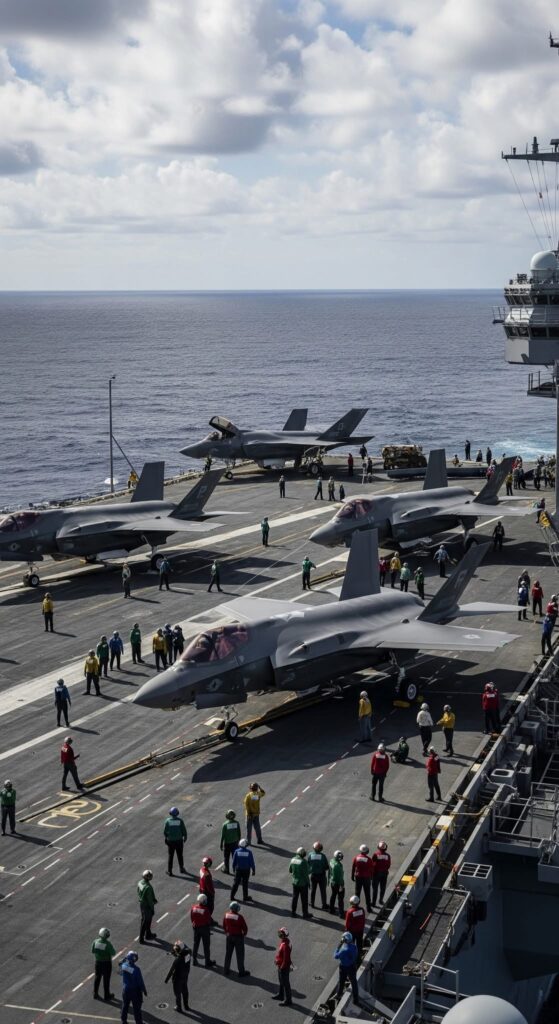
The image of an F-35 fighter jet parked on the deck of a warship in the middle of the sea is more than just a scene of military power. It represents the merging of advanced aviation technology with the strategic mobility of naval forces. The F-35, designed as a fifth-generation stealth fighter, is one of the most versatile aircraft in service today, and when deployed from a warship, it becomes a symbol of global reach and readiness.
The F-35 was built to be more than just another fighter jet. It was created with stealth technology, sensor fusion, and advanced communication systems that allow pilots to detect threats before being detected themselves. When stationed on a warship, especially in international waters, the aircraft can project power without relying on bases in foreign countries. This flexibility gives military commanders more freedom to respond quickly to potential conflicts or humanitarian missions.
On the deck of a warship, the F-35 looks compact but formidable. Its sleek design and angled surfaces are tailored for stealth, helping it avoid detection by radar. Naval versions of the F-35, such as the F-35B and F-35C, were specifically modified for sea operations. The F-35B can take off from short runways and land vertically, which makes it ideal for smaller carriers and amphibious assault ships. The F-35C, on the other hand, has larger wings and stronger landing gear for catapult launches and arrested recoveries on large aircraft carriers.
Parking an F-35 on a warship in the middle of the sea also demonstrates the flexibility of naval aviation. Warships carrying fighter jets can operate in international waters far from home, reducing dependence on land-based airfields. This mobility is critical during times of crisis, when the presence of a warship equipped with modern aircraft can deter aggression and reassure allies. It is not just about having planes in the air, but about having them ready wherever they are needed.
The scene of a lone F-35 on deck also reflects the demanding nature of sea-based aviation. Naval pilots must master difficult takeoffs and landings on moving decks, often in harsh weather conditions. The warship itself must support the aircraft with fuel, weapons, and maintenance crews. Every parked jet represents not just the power of the aircraft but also the coordinated effort of the entire crew keeping it operational.
From a symbolic perspective, the sight of an F-35 resting on a warship surrounded by open ocean highlights the blending of technology, strategy, and endurance. The sea itself is vast and unpredictable, but the presence of such an aircraft signals control and preparedness. It shows how modern military forces extend their influence beyond borders, projecting airpower wherever a ship can sail.
In conclusion, an F-35 fighter jet parked on a warship in the middle of the sea is more than a static image. It is a demonstration of mobility, power, and technological progress. It embodies the cooperation between pilots, sailors, and engineers who ensure the jet is ready for any mission. Whether as a tool of deterrence, defense, or rapid response, the F-35 at sea stands as a reminder of how advanced aviation and naval strength combine to shape modern security.


